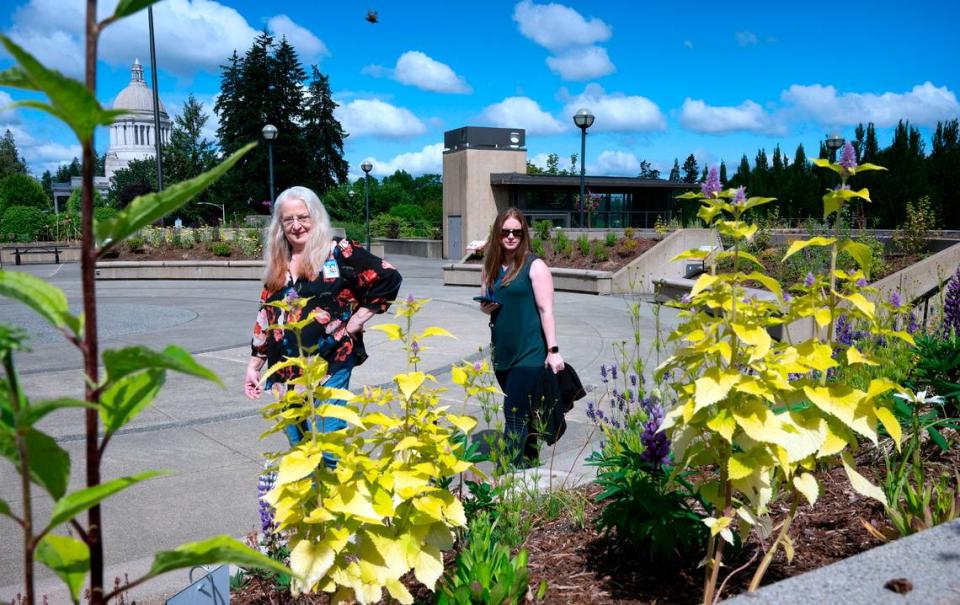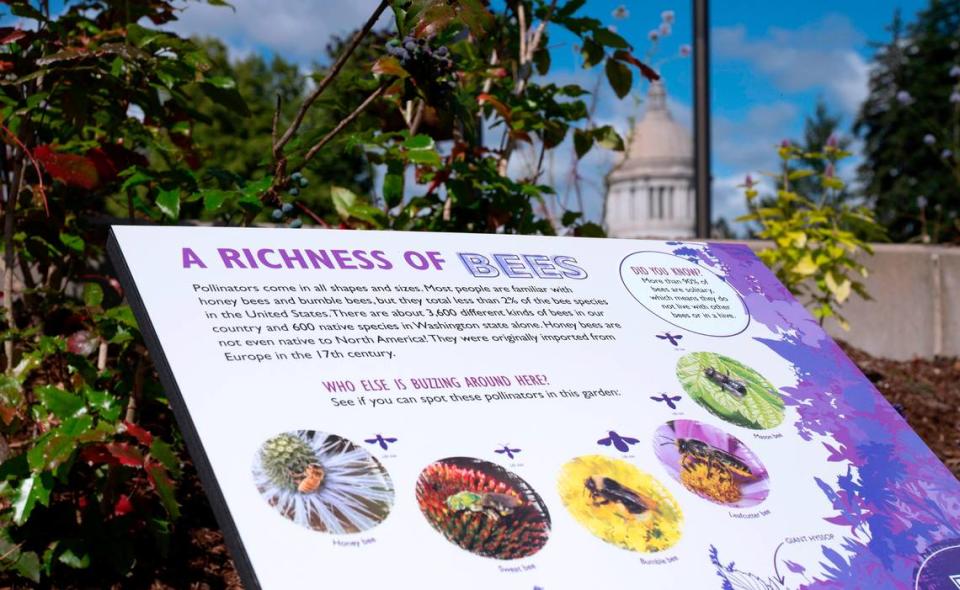New pollinator garden at WA state Capitol gives people and bees a place to have lunch
A new garden on the state Capitol campus in Olympia is attracting visitors by foot and by wing.
The Capitol Campus Pollinator Garden opened last week with colorful stands of golden yarrow, blue salvia, sweet-smelling alyssum and other flowers that winged critters find delectable.

For people, the garden is an educational experience on why honey bees, butterflies, hummingbirds, moths, native bees and other winged animals are essential to a healthy ecosystem.
For the birds and bugs, it’s a great place to have lunch.
It’s the first educational garden on the campus. The state Legislature provided $53,000 for its creation and initial maintenance.
In 2019, the Legislature created the Pollinator Health Program, which acknowledged the importance of pollinators. In 2021, legislation was added to require 25 percent of all landscaping for state public works projects to be pollinator habitat.
Home gardeners can create their own pollinator friendly gardens, say those who work in horticulture and entomology.
Why pollinators are important
The roughly 1,000-square-foot garden has plants that offer both nectar and pollen for winged creatures. The plants are just a few of the possibilities available to gardens .
“There’s thousands of plants people could choose for a pollinator garden,” said state Department of Enterprise Services manager Brent Chapman. Although he has a Ph.D. in horticulture, he said creating the garden has been educational for him as well.
“I learned so much from this project about the interrelationship between plants and pollinators,” he said.

Some 85 percent of the world’s flowering plant species need pollinators to transfer pollen from one flower to another in the same species.
Pollinator populations have declined from habitat loss, pesticide use and climate change, Chapman said. A pollinator friendly garden can offset those declines.
“A lot of people think they have to do something big to make a difference,” he said. “A container on your apartment deck or patio can create pollinator habitat.”
The Capitol garden was built by Enterprise Services but is a collaboration between various agencies and nonprofits.
Eight panels, created by Woodland Park Zoo, cover topics including the benefits of pollinators, biodiversity, soil and making your own pollinator garden.
Carbs and protein
For a honey bee, visiting a flower is like getting a protein bar and a Slurpee. A flower’s nectar is full of sugar, and its pollen is protein-packed. Both are taken back to the bee colony where the nectar becomes honey and the pollen is fed to growing larvae.
Bees and other pollinators don’t set out to pollinate blossoms — it’s a benefit the plant gets by providing the good stuff.
Not all plants need pollinators. Some — notably grasses and conifers — use the wind to disperse clouds of lightweight pollen.

If the idea of planting pollen-rich plants in your garden makes your nose itchy, fear not. It’s the wind-driven pollen that is mostly responsible for allergies.
The Xerces Society, a conservation group, advised on which plant species, both native and non-, to put in the garden.
A challenge, Chapman said, is educating citizen conservationists on the importance of replacing invasive plants that pollinators might love, like knotweed, with nectar-rich non-invasive plants.
Capitol Campus Pollinator Garden
▪ Where: East Plaza above the 14th Avenue tunnel on the East Capitol Campus grounds in Olympia.
▪ When: Open every day, daylight hours.
▪ Parking: Along north and south diagonals next to the Tivoli Fountain.
▪ More information: des.wa.gov/services/facilities-leasing/capitol-campus/parks-gardens/pollinator-garden

